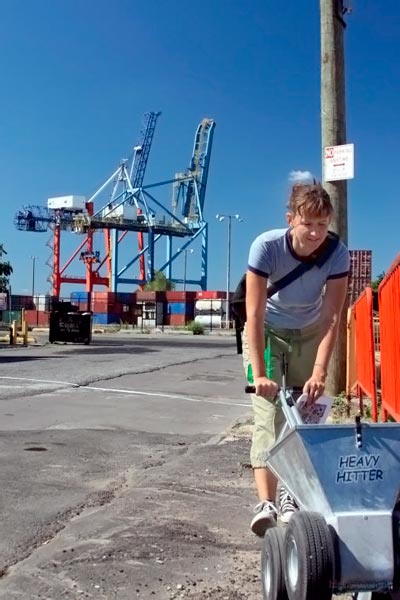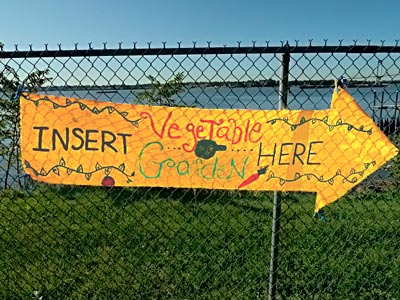 It was late August, and Eve Mosher was keenly aware of the monstrous storm that was surging up the coast. Irene had roared through the Bahamas as a category 3 hurricane, and weather forecasts showed it spinning up the seaboard like a giant bowling ball, blasting directly into Manhattan. New York City officials ordered almost 370,000 people to evacuate low-lying areas.
It was late August, and Eve Mosher was keenly aware of the monstrous storm that was surging up the coast. Irene had roared through the Bahamas as a category 3 hurricane, and weather forecasts showed it spinning up the seaboard like a giant bowling ball, blasting directly into Manhattan. New York City officials ordered almost 370,000 people to evacuate low-lying areas.
New Yorkers are not fond of Mother Nature messing with their routines, and some dug in, refusing to leave. But Mosher took the storm seriously. “I grew up in Texas — I prepare for hurricanes,” she says. “They can take you out.”
Adding to Mosher’s sensitivity was the fact that four summers prior, she set out on a public art project that charted areas of the city that would be flooded in a serious storm surge — an increasingly likely scenario with climate change. Called HighWaterLine, the project saw Mosher taking a line from a map — the topographic line marking 10 feet above sea level — and etching it onto the cityscape.
Now, with meteorologists predicting 10-foot surges along the coast, “they were evacuating the areas below where I drew the line,” Mosher says. “I have seen everything below that line — power stations, garbage transfer stations, communities, hospitals. Thinking about those places was one of the biggest impacts for me. I felt like I was bearing witness.”
In the end, there was some flooding (One Bulls Head resident woke up to find her new SUV underwater: “I was like, ‘This hurricane isn’t cool anymore,’ ” she told the New York Times.) but Irene swung wide, saving most of her punches for Upstate New York and Vermont. “We dodged the bullet,” Mosher says. But it’s only a matter of time. “The Office of Emergency Management is saying that we’re due for our 100-year storm.”
It is this awareness of looming environmental threats that drove Mosher from her art studio into the streets. She had spent several years living in San Francisco and Vermont, bastions of eco-consciousness, and had come back to New York only to find that city residents didn’t seem particularly concerned about the environment. (This was before Brooklyn developed its serious Portland fetish and transportation commissioner Janette Sadik-Khan put in some 260 miles of controversial bike lanes.)
“I suddenly felt like I had a stronger responsibility as an artist,” Mosher says. “I’m not a lobbyist or lawyer, but I have my creative ability.”
 So she traded in her brushes and oils (she had been doing nature-inspired abstractions) for a field chalker, like the ones used to mark ball fields, and set out into the city. She worked on weekends for six months, hauling 200 pounds of artistic accoutrements around on an industrial tricycle. (“It was my little carnival of existence,” she says.)
So she traded in her brushes and oils (she had been doing nature-inspired abstractions) for a field chalker, like the ones used to mark ball fields, and set out into the city. She worked on weekends for six months, hauling 200 pounds of artistic accoutrements around on an industrial tricycle. (“It was my little carnival of existence,” she says.)
In the East Village and Williamsburg, Mosher says she fit right in. “People didn’t even talk to me,” she says. “They just said, ‘Whatever, it’s New York.'”
But in other neighborhoods, such as South Brooklyn, she was a curiosity. People came out of their houses to ask what she was doing. “Kids followed me around like the Pied Piper.”
Some insurance companies had recently stopped selling flood insurance in South Brooklyn, she says. The residents knew that the floodwaters were coming. Mosher’s art project showed them how high.
“Eve really found a new way of teaching people,” says Heidi Quante, creative coordinator with the climate action group 350.org. “Her art was so good, she became a magnet. And when people learn by asking rather than being told, they retain the information better.”
Quante also points to studies that show that when you drop something unexpected into someone’s ordinary routine — a woman marching across the street with a funny wheeled cart, leaving a blue chalk line in her wake, for example — they are apt to remember it.
 Using this same principle, Moser and 350.org recently collaborated on a project called Insert____Here. Mosher created the project after the HighWaterLine as a way of drawing ideas from residents about how the city could thrive in the face of climate change. She stenciled arrows around town with the message, “Insert ________ Here,” and let the locals fill in the blank.
Using this same principle, Moser and 350.org recently collaborated on a project called Insert____Here. Mosher created the project after the HighWaterLine as a way of drawing ideas from residents about how the city could thrive in the face of climate change. She stenciled arrows around town with the message, “Insert ________ Here,” and let the locals fill in the blank.
Working with 350.org, Mosher revived the project, partnering with community groups. The POINT Community Development Corporation in the Bronx now has a big “Insert Green Roof Here” sign up. In Brooklyn, a group called 596 Acres, which has mapped undeveloped city-owned land, is using the project to promote community gardens and other projects.
“We want to see if we can draw attention to these projects and help raise funds,” Mosher says. “We’re using simple artistic intervention as a way to actually make things happen.”
Next, Mosher takes the HighWaterLine project to Dublin, Ireland, and other cities, where she’ll work with local school kids to chart the coming floods there. After that? It’s currently undetermined, but Quante thinks Mosher could use her unique message to wake up foot-dragging politicians in the nation’s capitol: “I think she should do HighWaterLine in Washington, D.C.”
This is part of a series of stories about environment-related street art. Next week, meet a guy who calls himself a “grime writer.”



